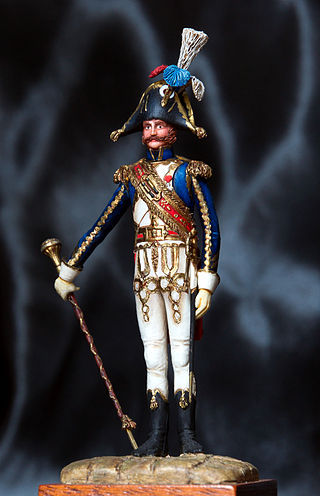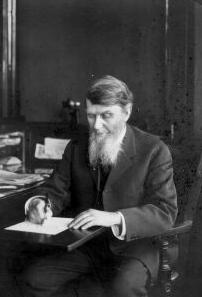
Land Rover is a British brand of predominantly four-wheel drive, off-road capable vehicles, owned by multinational car manufacturer Jaguar Land Rover (JLR), since 2008 a subsidiary of India's Tata Motors. JLR currently builds Land Rovers in Brazil, China, India, Slovakia, and the United Kingdom. The Land Rover name was created in 1948 by the Rover Company for a utilitarian 4WD off-road vehicle; currently, the Land Rover range consists solely of upmarket and luxury sport utility vehicles.

The Lincoln Highway is one of the first transcontinental highways in the United States and one of the first highways designed expressly for automobiles. Conceived in 1912 by Indiana entrepreneur Carl G. Fisher, and formally dedicated October 31, 1913, the Lincoln Highway runs coast-to-coast from Times Square in New York City west to Lincoln Park in San Francisco. The full route originally ran through 13 states: New York, New Jersey, Pennsylvania, Ohio, Indiana, Illinois, Iowa, Nebraska, Colorado, Wyoming, Utah, Nevada, and California. In 1915, the "Colorado Loop" was removed, and in 1928, a realignment routed the Lincoln Highway through the northern tip of West Virginia. Thus, there are 14 states, 128 counties, and more than 700 cities, towns, and villages through which the highway passed at some time in its history.

Matchbox is a toy brand which was introduced by Lesney Products in 1953, and is now owned by Mattel, Inc, which purchased the brand in 1997. The brand was given its name because the original die-cast "Matchbox" toys were sold in boxes similar to those in which matches were sold. The brand grew to encompass a broad range of toys, including larger scale die-cast models, plastic model kits, slot car racing, and action figures.

Studebaker was an American wagon and automobile manufacturer based in South Bend, Indiana, with a building at 1600 Broadway, Times Square, Midtown Manhattan, New York City. Founded in 1852 and incorporated in 1868 as the Studebaker Brothers Manufacturing Company, the firm was originally a coachbuilder, manufacturing wagons, buggies, carriages and harnesses.

A vintage car is, in the most general sense, an old automobile, and in the narrower senses of car enthusiasts and collectors, it is a car from the period of 1919 to 1930. Such enthusiasts have categorization schemes for ages of cars that enforce distinctions between antique cars, vintage cars, classic cars, and so on. The classification criteria vary, but consensus within any country is often maintained by major car clubs, for example the Vintage Sports-Car Club (VSCC) in the UK.
A classic car is typically an automobile 25 years or older; however, definitions vary. A common theme is that of an older car of historical interest is collectible and tends to be restored rather than scrapped, though sometimes age is not a factor. Classic cars are often considered a subset of a broader category of "collector cars," including restored classic cars and newer exotic vehicles. A subset of classic cars are known as antique cars, manufactured before 1980, or vintage cars, manufactured before World War II.

A model figure is a scale model representing a human, monster or other creature. Human figures may be either a generic figure of a type, a historical personage, or a fictional character.

The Automobile License Plate Collectors Association (ALPCA) is the largest such organization in the world. Founded in Rumney Depot, New Hampshire, United States, in 1954 and holding its first meeting/convention in North Attleboro, Massachusetts, in 1955. It serves as a way for license plate collectors to trade plates, distribute news, and provide historic information to members.

Meccano Magazine was an English monthly hobby magazine published by Meccano Ltd between 1916 and 1963, and by other publishers between 1963 and 1981. The magazine was initially created for Meccano builders, but it soon became a general hobby magazine aimed at "boys of all ages".

The Willys MB and the Ford GPW, both formally called the U.S. Army Truck, 1⁄4‑ton, 4×4, Command Reconnaissance, commonly known as the Willys Jeep, Jeep, or jeep, and sometimes referred to by its Standard Army vehicle supply nr. G-503, were highly successful American off-road capable, light military utility vehicles. Well over 600,000 were built to a single standardized design, for the United States and the Allied forces in World War II, from 1941 until 1945. This also made it the world's first mass-produced four-wheel-drive car, built in six-figure numbers.
The Marmon-Herrington Company, Inc. is an American manufacturer of axles and transfer cases for trucks and other vehicles. Earlier, the company built military vehicles and some tanks during World War II, and until the late 1950s or early 1960s was a manufacturer of trucks and trolley buses. Marmon-Herrington had a partnership with Ford Motor Company, producing trucks and other commercial vehicles, such as buses. The company may be best known for its all-wheel-drive conversions to other truck maker's units, especially to Ford truck models. Founded in 1931, Marmon-Herrington was based in Indianapolis, Indiana, with a plant in Windsor, Ontario, and remained in Indianapolis until 1963. It is now based in Louisville, Kentucky.

Vintage amateur radio is a subset of amateur radio hobby where enthusiasts collect, restore, preserve, build, and operate amateur radio equipment from bygone years, such as those using vacuum tube technology. Popular modes of operation include speaking over amplitude modulation (AM), and communicating using Morse code through continuous wave (CW) radiotelegraphy. Some enthusiasts have interest in owning, restoring and operating vintage military and commercial radio equipment such as those from 1940s to 1960s. Some undertake to construct their own gear, known in ham slang as homebrewing, using vintage parts and designs. A number of amateur radio clubs and organizations sponsor contests, events, and swap meets that cater to this specialized aspect of the hobby.
Hemmings Motor News is a monthly magazine catering to traders and collectors of antique, classic, and exotic sports cars. It is the largest and oldest publication of its type in the United States, with sales of 215,000 copies per month, and is best known for its large classified advertising sections. The magazine counts as subscribers and advertisers practically every notable seller and collector of classic cars, including Jay Leno and his Big Dog Garage, and most collector car clubs are included in its directory.
The Boston Street Railway Association (BSRA) is a non-profit organization in Boston, Massachusetts, whose central objective is preserving transportation history in Boston and throughout New England. They host monthly membership meetings, publish a bimonthly transit news magazine, and are restoring an ex-Boston Type 5 streetcar. They also regularly publish their own books and materials, as well as organize fan trips on Boston's MBTA and to the Seashore Trolley Museum in Kennebunkport, Maine. Funding for the organization is provided primarily through tax-deductible member and individual donations, as well as through grants and donations from other organizations and groups.

John Mohler Studebaker was the Pennsylvania Dutch co-founder and later executive of what would become the Studebaker Corporation automobile company. He was the third son of the founding Studebaker family, and played a key role in the growth of the company during his years as president, from 1868 until his death in 1917.

The Armor Modeling and Preservation Society (AMPS) is a social club with the common interest of modeling miniature armored fighting vehicles, military model figures, ordnance, dioramas, and related equipment and promotion of historic military vehicle restoration. AMPS is an international club headquartered in the United States

The Transcontinental Motor Convoys were early 20th century vehicle convoys, including three US Army truck trains, that crossed the United States to the west coast. The 1919 Motor Transport Corps convoy from Washington, D.C., to San Francisco used the incomplete Lincoln Highway.

The 1919 Motor Transport Corps convoy was a long distance convoy carried out by the U.S. Army Motor Transport Corps that drove over 3,000 mi (4,800 km) on the historic Lincoln Highway from Washington, D.C., to Oakland, California and then by ferry over to end in San Francisco.

The Dodge WC-54, Ambulance, 3⁄4-ton, 4 x 4,, was the main military ambulance variant of the prolific Dodge WC series of light 4×4 trucks, developed during World War II. Built from 1942 until 1945, they served as the U.S. Army's main dedicated ambulance, with many also serving in the Korean War, in the U.S. Army Medical Corps, some used as late as 1953; and others serving as late as the 1960s in the armies of some European countries.

The Militor truck, officially 3-ton truck, Ordnance Department Model 1918, was designed and built by the Militor Corporation for the United States Army Ordnance Department as a standardized four-wheel drive 3-ton truck and artillery tractor toward the end of World War I. With the end of the war, larger orders were cancelled and 75 were built, these being issued to the Artillery Corps.















